
For those, like me, who like to travel to feed the mind, body, and spirit, a trip to Wounded Knee will be food for the soul, but it’s liable to break your heart. Reading about it is difficult enough, but standing in the presence of the mass grave where hundreds of frozen bodies – mostly of women and children – were arbitrarily tossed into a giant hole in the ground just five generations ago, is a sobering – make that disturbing. The experience of visiting Wounded Knee was so unsettling that I almost wished I had never gone.
Almost.
Almost, because while it’s painful to recall the unthinkable violence, it’s important to show up and stand in the presence of that memorial and make the silent statement that learning the truth matters.
Before that massacre, which many history books still refer to as a “battle,” our white ancestors spent 350 years taking away the American indigenous peoples’ land, killing their primary source of food, breaking treaties and promises, humiliating Indian leaders, and demonizing their culture – all for its own selfish gain. We must recall the truth and remember the lost ones who were mowed down with Hotchkiss mountain guns as they ran screaming for cover.
This site reminds the world that Wounded Knee was a massacre – not a battle regardless of what the white “victors” wrote about it. A reporter for the “The South Dakota Democrat” stated,
“The first gun had no sooner been fired than it was followed by hundreds of others and the battle was on. The fighting continued for about a half hour, and then was continued in skirmish for another hour. … 24 privates were killed and 33 wounded, three of whom have since died. There were about 130 Indians killed, about 100 of whom were bucks, and the remained squaws and children. One Indian scout was killed. All the wounded Indians were brought into the agency and are being cared for.”
Recapping the Wounded Knee Massacre
In 1867 the US government signed a treaty stating that its citizens would stay out of the Oglala Sioux’s sacred lands known as “The Black Hills.” By 1870 the US broke that treaty because gold was discovered in that region. Skirmishes and fights broke out (these are included in what we call “The Indian Wars”) and eventually the Lakota were beaten off or starved out of their land and forced onto reservations. In 1889 a ritual known as “The Ghost Dance” became popular with the Lakota. It united them in one common prayer. They used this dance as a prayer ritual to regain their lost way of life, their land, their place of resurrection. It was a ritual of hope. However the US Federal Army didn’t understand the culture or the ritual. They saw the Ghost Dance as a prelude to battle and war.
On December 29, 1890, a large group of starving Lakotas led by Chief Big Foot set out for Pine Ridge hoping to find food and supplies. Big Foot carried a white flag to show he was coming in peace. When they came into the freezing fields near Wounded Knee Creek, members of the US 7th Cavalry became fearful that there would be an uprising when several Lakotas started the Ghost Dance ritual. The troops began to confiscate the Lakota weapons, and in that process, a small fight broke out between a soldier and a Lakota. The fight turned into a skirmish, a shot was fired and the army reacted with gunfire. The Lakota only had a few men with a few guns. The 7th Cavalry had lots of men and guns including a battery of four Hotchkiss mountain guns on a slight rise in the field aimed at the settlement. These guns could fire 68 rounds per minute with an accuracy range that was over a mile. When the guns started firing, chaos ensued. Women and children fled through the fields to avoid the gunfire, but they were open targets.
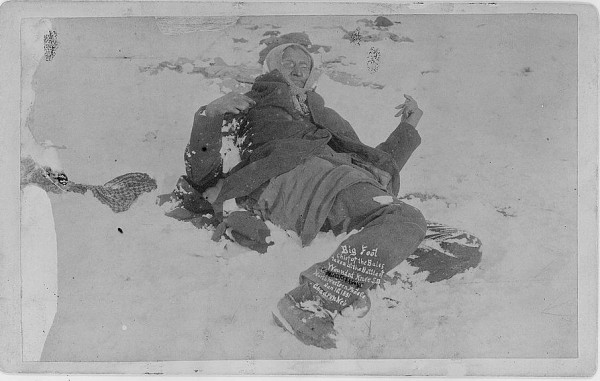
The result was 25 Federal troops killed and 39 wounded, 6 of whom would eventually die from the wounds. On the Lakota side, about 300 were killed – 200 of those being women and children. Some of the wounded Lakota were carried off to a local Christian church where a makeshift hospital was set up. The Lakota bodies presumed to be dead were left where they lay in the field because a blizzard was coming. However, many on the field weren’t dead and froze to death in the hours after the massacre. For three days those bodies were still in the fields. Many photos have circulated showing their stiff corpses. By day three more troops arrived to help handle the aftermath of the massacre which included cleaning up the field.

The frozen bodies were dumped into a mass grave that was dug out of the same rise in the field where the Hotchkiss guns had been mounted. Chief Big Foot’s body was scalped and the scalp sat on display at a Massachusetts museum for one hundred ten years until Big Foot’s family finally reclaimed it and buried this last bit of their ancestor’s remains near where he was born.
Twenty Congressional Medals of Honor were awarded to 17 American members of the cavalry and 3 American members of the artillery for distinguished bravery in battle.
Soon after the Wounded Knee massacre, “The Saturday Pioneer” in Aberdeen South Dakota printed this:
“The Whites, by law of conquest, by justice of civilization, are masters of the American continent …and the best safety of the frontier settlers will be secured by the total annihilation of the few remaining Indians…The Pioneer has before declared that our only safety depends upon the total extirmination [sic] of the Indians. Having wronged them for centuries we had better, in order to protect our civilization, follow it up by one more wrong and wipe these untamed and untamable creatures from the face of the earth. In this lies future safety for our settlers and the soldiers who are under incompetent commands. Otherwise, we may expect future years to be as full of trouble with the redskins as those have been in the past”
The editor of the paper was L. Frank Baum, also the author of “The Wonderful Wizard of Oz,” which was published ten years later.
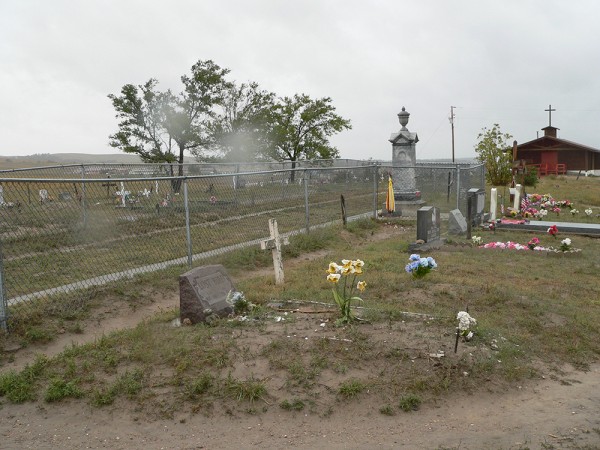
Today, this mass grave is enclosed by a simple chain link fence and has a tall marker commemorating those who died. The marker has the names of Lakota men who fought and are buried there. It is situated directly behind a little Christian church.
Wounded Knee Today – not always a friendly site
Dan and I visited the massacre site and memorial, which is a two-hour drive from the Black Hills and all many of the Lakota heritage sites in South Dakota. The monument is difficult to find and there are few signs. Once you do find the site, it is underwhelming. It’s nothing more than a hill with a chain link fence and a tall marker. But one must remember that the site is located on an active Indian reservation and this land is their land, not our land.
A Lakota man approached us within seconds of us pulling up to the marker (in the rain). He stood with us for the entire time we were on the site. He started telling the history and instructing us on manners of respect that included smoking a cigarette (which Dan provided) over the grave. This man’s presence was a little intrusive. We weren’t sure what he wanted, but he wouldn’t leave. We tipped him for his story and time and he accepted the cash. We felt a little exposed, but never unsafe.
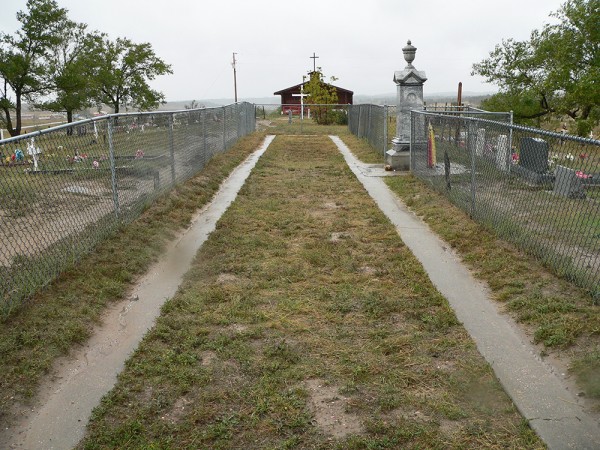
We went into the visitor center across the street, which was mostly empty. We returned to our cars in the pouring rain and just as we started to pull out another vehicle pulled up to ours and a young Lakota girl jumped out and knocked on my car window. She was dripping wet – maybe about 18. She said she had dream catchers to sell and that they were homemade by the people on the reservation and cost $5 cash. I happily took one. And I’m glad I did. I remember her every time I look at it.
So Why Should You Visit Wounded Knee?
I interviewed C.J. Clifford, the Wounded Knee Representative on the Oglala Sioux Tribal Council, and asked him if the locals welcomed visitors. He replied that they definitely do. He recommended calling the Oglala Tribal office at 605.867.5821 because they can organize a tour given by a local guide and the experience would be more meaningful. When I asked C.J. why people should visit Wounded Knee, he responded, “They should come and learn the truth of what really happened.”
I agree.
The Wounded Knee story is relatively recent in our history, and there is something about standing on that site that connects us with the people that our white ancestors attempted to annihilate. Being present matters. Being interested and reaching out promotes peace between the two cultures.
Peace is a good thing.
I offer special thanks to C.J. Clifford who spent time with me on the telephone answering all my questions on the day of the 125th anniversary of the Wounded Knee Massacre. It was a busy day for him. C.J.’s great-grandfather was Black Elk, a famous holy man of the Oglala Lakota. He was a second cousin to Crazy Horse and was present at the Wounded Knee massacre. When Black Elk was asked to recount his memory of the Wounded Knee massacre he gave enormous detail. At the end of his story, he added a short comment:
I did not know then how much was ended. When I look back now from this high hill of my old age, I can still see the butchered women and children lying heaped and scattered all along the crooked gulch as plain as when I saw them with eyes still young. And I can see that something else died there in the bloody mud, and was buried in the blizzard. A people’s dream died there. It was a beautiful dream.
~Black Elk
NOTE: C.J. Clifford passed away unexpectedly shortly after this was published. We send our blessings and condolences to his family and friends and pray that his memory will be a blessing for all who knew him. ~Mindie Burgoyne
Read Lost Bird: The Sad Story of a Baby Taken from Wounded Knee


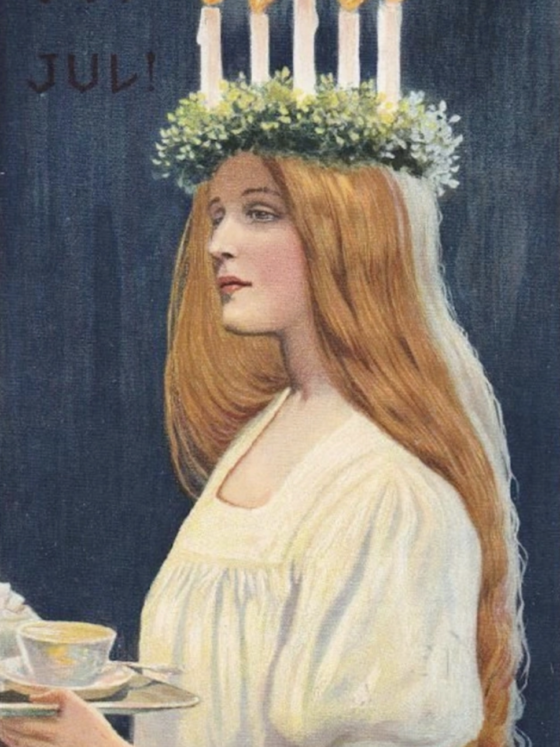
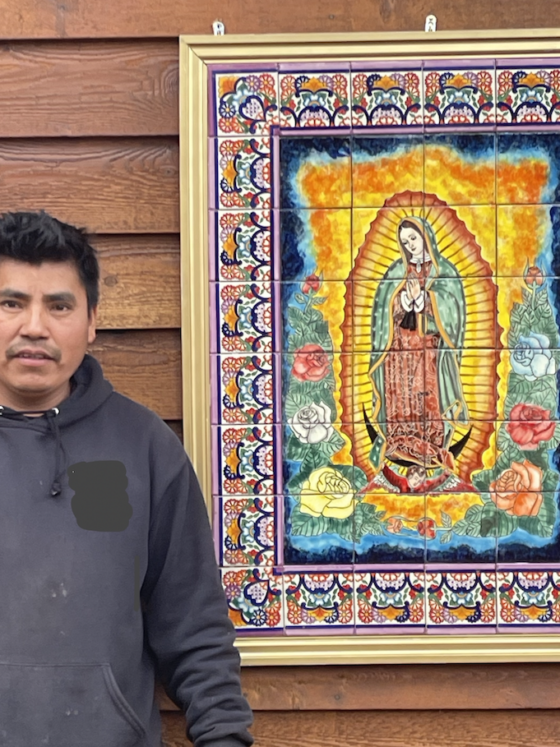
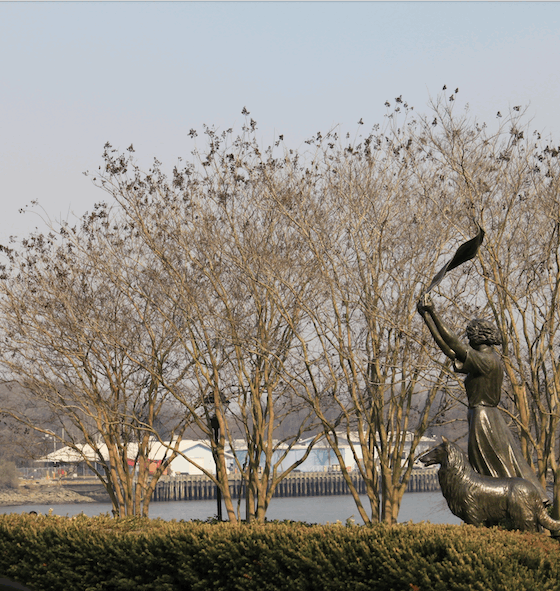

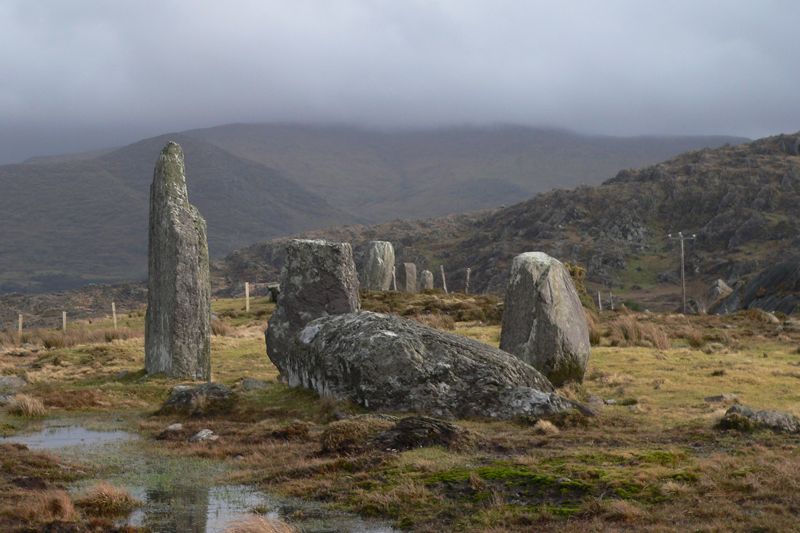

Mary Jo
April 15, 2016My husband I also visited Wounded Knee and you mirrored our thoughts exactly…My husband couldnt get over how run down everything seemed to be and the trash everywhere. If you are close to the area I would go by, but I wouldnt detour out of my way again… We also saw carhenge( http://www.roadsideamerica.com/story/2606) on the way there and that in itself made up for the rest of the trip.
Mike Haskins
February 26, 2016Mindy, Thank you for the touching post. Being half Native American, I realize the dichotomy within myself
and wish I could rub out the “blue-
eyed devil” half. Let’s hope that nothing this tragic happens again
in the world, not just on our shores.
Thanks again for the poignancy.
Mike Haskins
Leo van Kints (NANAI Foundation)
February 25, 2016Good article. First a small correction. The land of the mass grave is owned by a Polish guy, who now tries to sell it for almost four million dollar.
I visited Wounded Knee many times since 1968. Usually together with indian people who really know what they are talking about. For instance Leonard Little Finger, whose great-great grandfather was Chief Big Foot. (Little Finger reclaimed the lock of hair en took it home to burn it with ceremony). One time there stopped a bus with Japanese tourists, so I left to come back later. Another unpleasant thing is what I call the panhandling. Whenever this happens, I instantly tell the ‘specialist’ who wants to ‘sell’ the story that I probably can tell him more about the history then he can. Then I ask him if he has something to sell. Sometimes they have a dreamcather or some beadwork which I then buy (if the price is reasonable). If not, I give him/them five dollar and ask them to leave me alone. Once between the graves there was a girl begging for some cash to be able to buy diapers and then shows a picture of a baby. I asked her why she wasn’t at School and if she thought it was okay to do this at this place. She walked away down the hill to the sales booths. Later I met her there and I bought for 20 dollar beadwork. In Summer during the weekends when there are many tourists, there are ‘elders’ who watch over the site and send the panhandlers away.
Once I met a Lakota student at the site and talked about these problems. His response was: “If you do not have anything, everything is permitted to get some money. It is easy for you to think this is wrong. You are very rich compared to this girl. You traveled all the way from Europe by plane, are driving around in a fancy Van and probably sleep in good motels. So don’t tell us what is good and wrong.” I felt a bit ashamed. Then he asked me if I could buy a book from him. I don’t remember the title but it was a good book, that he probably had loaned from the library in Kyle. (He had told me that he studied at the tribal college in Kyle). He wanted six dollars for it, so he could take the bus back to Kyle. I gave him ten bucks and wished him luck with his study. Later I took the book back to the library. I did it by car, because there are no buses on the rez…..
I will always visit the site when I accompany small groups from Holland, who want to learn more about the indian history, way of living, culture and traditions nowadays. But the site that impressed me most is the one at Sandcreek close to the eastern border of Colorado, where also a big group of indians was slaughtered. Not many people know about that tragedy. Difficult to find and hardly any tourists, perfect.
The Wounded Knee site is for sale. Someone (writer Tim Giagio) wants to make it a tourist ‘attraction’. There is a big discussion going on now. Most of the local people want to keep it like it is. Very basic. And if the tourists can’t find it, no problem, we don’t care.
Joanna
February 25, 2016Thank you for the article. I agree with the dilemma of visiting or not – it is a harsh place to visit. Me&my fiancee (he proposed to me on top of Harney Peak:) ) went there last fall and I`m glad we did. As foreign visitors, we wanted to see the US so we started our roadtrip from New York with SD as destination. I can tell you that this puzzled many americans of whom many didn`t even know natives hold powwows (we went to two of them, Eagle Butte & Potato Creek – loved both!) or how they live or what was done in the past or why would anyone ever even go to SD.
I met a very nice lady on the Wounded Knee memorial site and bought green quill earrings from her – they are very beautiful and I`m thankful I did.
I just want to thank the Lakota people we met for being friendly and welcoming, even if they were a bit unsure about us, and also for their funny jokes. This is going a bit off topic but I guess my point is this article reminded me of these things and the positive environment we met when we were there. Aho
Joanna from Estonia, Tallinn
Leo van Kints (NANAI Foundation)
February 25, 2016You did the right thing to buy something from a local indian woman. Sometime ago a lady complained to me that the people in Pine Ridge were not friendly. I asked her what she had experienced. She had stopped at Big Bats, the gas station for some snacks and coffee. A young girl showed her some earrings and asked her if she wanted to buy a set. The woman told her that she did not like the color and said no. For just spending six or seven dollar she would have made friends. Now she was just another tourist, visiting the zoo.
By the way, I have seen a couple at the top of Harney Peak where the young man proposed to his girlfriend. It was just great to see that.
The pow wows at Potato Creek and Eagle Butte are some of the best. Social events and not too commercial.
Pierangela
February 25, 2016I’ve been in Wounded Knee in august 2012. That day nobody else was visiting the site. Only me a my friend. I knew everything about wounded knee, lakota culture and the story of the so called indian wars. So I was prepared to story but not to emotions. After the moving visit we went to the cultural center, a colorfull building very close to the burial site. Inside there was a young lakota man and I began to read and to translate to my friend all the stories written on the walls, concerning American Indian Movement. We spent about one hour inside, and before to go, the young man told us that most people in that moment were near the border with Nebraska for a protest against the infamous sell of alcoholics in White Clay, a town born only to make money selling alcoholics to the reservation people. The days I spent in Pine Ridge (we sleplt in Kyle) were so touching, I met a lot of amazing people with the flame of the warriors inside strugling to survive in that beautiful damned land. I will never forget! Sorry for my english
Mary-Lee Lutz
February 25, 2016I visited Wounded Knee many years ago. My Oglala friends took me there at my request. I knew what I was looking at… the mass grave of the people who died there and were buried so disrespectfully by white soldiers. I took some photos of the site, the monument with the names of some of the leaders of the people, the entrance, etc. Then I stood for a while to think about it all, and I cried. Your article brings the memories back. I also saw the grave of Lost Bird, just outside the fence. That was important to me because I was adopted. Then there was the grave of the AIM warrior, also just outside the fence. I left some tobacco on both their graves. There are really no words that can express adequately what the experience was like. I am glad I was there. It was an experience I will never forget. There were sunflowers growing by the fence.
Mindie Burgoyne
February 25, 2016Hey Mary-Lee.
Thanks so much for your kind comments. You gave such great commentary about your experience and how visiting the graves made you feel. It is such a magical (though sad) place.
Kristin Kolb
February 24, 2016Thanks. Found this via Lakota Country Times. I spent time at Wounded Knee on and off for three months last fall. I have not been able to write about my experiences there yet. It was too intense. I linked to your blog.
Mindie Burgoyne
February 25, 2016It is incredibly intense. Even though it’s been a few years since my last visit to Wounded Knee, I don’t think I could have written about it right away. The emotion just washes over you.
Pauline anthony
February 7, 2016We went with a bunch of native Elders and Senior Citizens from our area . White people and Native on a cultural trip , what an experience ,mind opening for both sides. The local Native came out to sell us articles they made because that is one of their ways to earn money. We all bought something’s to help them.
Mindie Burgoyne
February 25, 2016So true, Pauline. The visit is so much more meaningful when you’re escorted by native people.
Greg Helms
December 30, 2015I loved your article. The Native Americans are one of the most mistreated peoples in our nations history. What was done to them is a disgrace to humanity. I do not blame them one bit for trying to save there land which was rightly theres anyway. They were there first. I know of no treaty between our Native Americans and the U.S. government that was’nt broken. Any support we can give them should be given.
Barbara Leonard
December 29, 2015Great article.I would like to read more on it. Thank you for your insight. I just finished wished reading The Girl Who Wrote in Silk, by Kellie Estes. A fictional story based on the Chinese massacres in the western territories (Tacoma, Seattle) at about this same time. What arrogant people the first settlers were.I had no knowledge of these massacres. So sad.
Terry White
December 29, 2015I had a similar experience at Wounded Knee, down to the youngsters peddling their world. There is sadness in the very soul